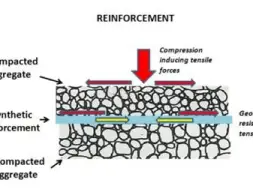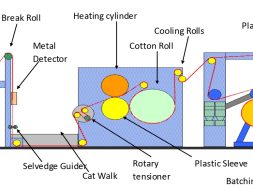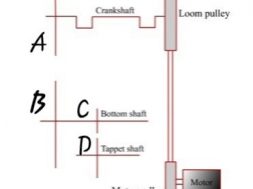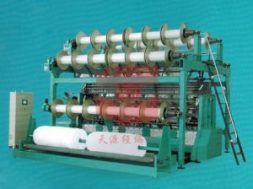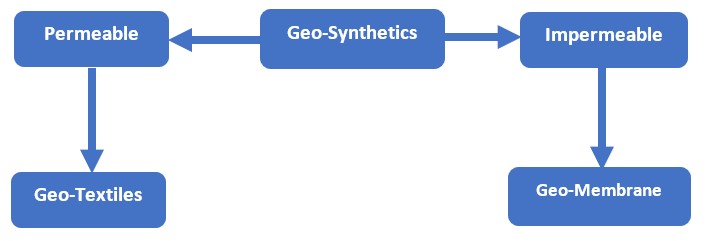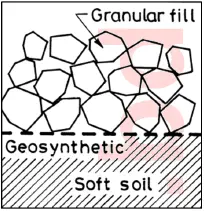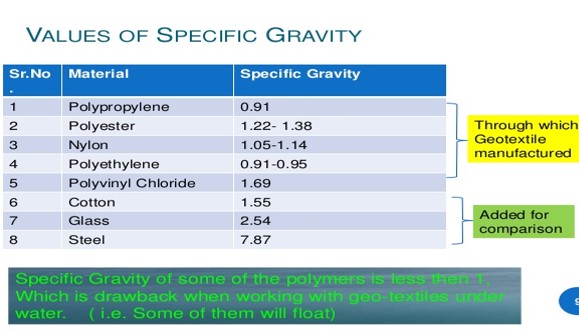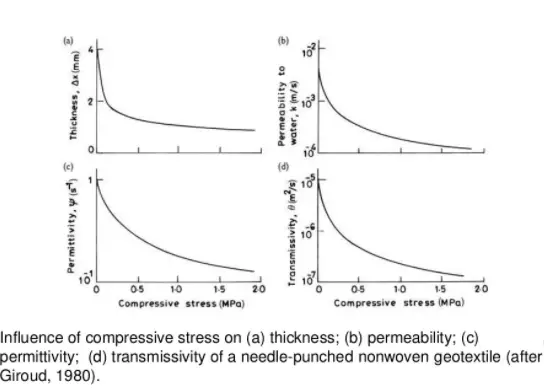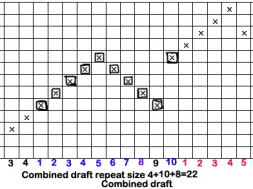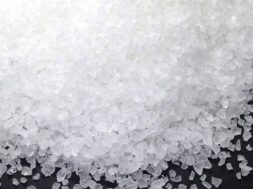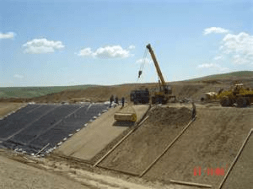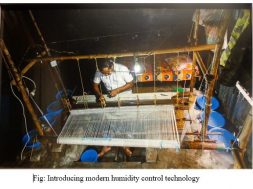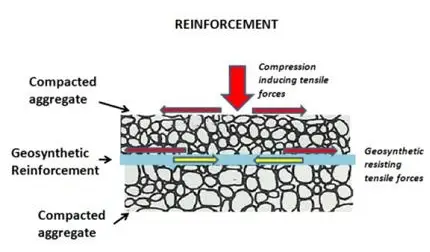
Geotextiles and Geosynthetics | Properties of Geotextiles
Geotextiles and Geosynthetics | Scope of Geotextiles | Essential Properties of Geotextiles | Terms Related to Geotextiles
Geotextile :
A planar, permeable, polymeric (synthetic or natural) textile material, which may be nonwoven, knitted or woven, used in contact with soil/rock and/or any other geotechnical material in civil engineering applications.
Geotextile is a part of technical textile which is used for special purposes. Geotextiles form one of the two largest groups of Geo synthetics. The raw material of geotextile comes from polyester, Polyamide, Polypropylene and Polyethylene. The application of geotextile is civil engineering, coastal engineering and also hugly used in the area of construction site. Generally, geotextiles are located in the tension area to make stronger the soil.
Geosynthetics:
A planar, polymeric (synthetic or natural) material used in contact with soil/rock and/or any other geotechnical material, for Filtration, Drainage, Separation, Reinforcement, Protection, Sealing and Packing.
Terms Related to Geotextiles:
A wide range of geotextile terms have been added up which usually have different meanings as well as functionality. However, these closely related terms are given below :
- Geospacers : Impermeable spacers used within fine drains.
- Geowebs : An American term used for geotextiles.
- Geogrids : Geotextile products with large rectangular apertures (more correctly called geotextile grids ) or non-rectangular apertures ( more correctly called geotextile nets ).
- Geosynthetics : Planar flat sheet geotextiles and geotextile related products, excluding geotextile mats.
- Geofabrics : Planar flat sheet geotextiles and related products, excluding geotextile mats
- Geoproducts : Meaning Geosynthetics, geotextile related products made from natural fibres, geospacers and metallic soil enforcement.
- Geocomposites : Composites consisting of two or more geoproducts.
Scopes of Geotextiles :
Geotextiles are used in a wide range of applications, which continues to grow as new forms of geotextiles are developed. The main applications are erosion control, soil filtration, road sub-base separators, reinforcing soils in embankments and retaining walls, and protection of geomembranes. However, the four basic functions are:
1 . Separation : When used as a separator, geotextile must prevent the intermixing of particles from two layers with different properties. This prevents contamination which can impair the intended behavior of granular soil layers.
Following figure gives more of a clear concept about the separation function.
2 . Filtration : Where its role is that of filtering the geotextile must promote the development of natural filter in adjacent layer, holding back the other soil particles, while at the same time allowing water to pass through. A geosynthetic may function as a filter that allows adequate fluid to flow with limited migration of soil particles across its plane over a projected service lifetime of the application under consideration. The following figure represents the same.
3 . Reinforcement : The purpose of geotextiles in the reinforcement function is to reinforce the weak sub-grade or subsoil. It helps to strengthen the soil surface and to increase the soils ability to stay put especially on the slopes.
Due to this the slopes are stabilised either permanently or temporarily and creep stops or at least
diminishes. Further, it helps in preventing water from permeating a slope and controlling the amount of infiltration that occurs during various rain events.
Reinforcing aspect of geotextiles can be used for roads, temporary roads, pavements, air strips, stabilized road slopes, retaining walls, containment systems, controlling reflective cracking, fibre or fabric reinforced concrete etc. Asphalt impregnated geotextile is used as a paving fabric relieving stress and acting as moisture barrier.
4 . Drainage : The use of geotextiles in drainage has made significant strides in changing the conventional procedure of using graded filters. Outstanding advantages of geotextiles in drainage are:
- It eliminates the filter sand with the dual media backfill.
- In some cases, it eliminates the need for perforated pipes.
- In situations where only sand backfill is available, it is possible to wrap the drainage pipe with fabric to act as a screening agent. The fabric, thereby, prevents the sand from entering perforation in the pipe.
- With Geotextiles, trench excavation is considerably reduced.
- Many times the use of geotextiles eliminates the need for trench shoring. Needle-punched nonwoven geotextile is preferred where drainage is the primary functional requirement.
5 . Protection : Lining is used for cushioning and protection of membrane used for applications such as land fill and waste containment from puncture or training by sharp stone or stress. Geotextiles can also be impregnated with polymeric or mineral sealing materials such as bentonite clay to provide flexible barriers to mixture. Usually spun bond or needle-punched nonwovens are preferred for such applications.
Each of these functions calls for highly specific textile performance characteristics. As the functional requirements are to be met over many years of the life of the civil construction, durability is often a very key requirement. Many applications require several of the above functions to be met simultaneously. Further, the cost of the geotechnical solution is also an important factor to be taken into account in.
Essential Properties of Geotextiles :
There are three main properties which are required and specified for a geotextile are its mechanical responses, filtration ability and chemical resistance. These are the properties that produce the required working effect. They are all developed from the combination of the physical form of the polymer fibers, their textile construction and the polymer chemical characteristics. For example, the mechanical response of a geotextile will depend upon the orientation and regularity of the fibers as well as the type of polymer from which it is made. Also, the chemical resistance of a geotextile will depend upon the size of the individual component fibers in the fabric, as well as their chemical composition – fine fibers with a large specific surface area are subject to more rapid chemical attack than coarse fibers of the same polymer.
The Characteristics of Geotextiles are Broadly Classified as:
| SL. No. | Classification | Properties |
| 1 | Physical properties |
|
| 2 | Mechanical properties |
|
| 3 | Hydraulic properties |
|
| 4 | Degradation properties |
|
| 5 | Endurance properties |
|
Physical properties
A . Specific Gravity:
B . Weight:
- This is usually given in GSM (g/m2)
- Tested in circular specimens, which is not less than 100 cm2
- For geo-synthetics, the values vary from 100-1000 g/m2
- Unit weight of geotextiles < Unit weight of geomembranes
C . Thickness:
- This is the distance between the upper and lower surfaces, measured normal to the surfaces at a specified normal compressive stress
- Measured to the accuracy of .02 mm, and thickness varies from .25mm to 7.5mm
- It is important to determine the permittivity and transmissivity.
D . Stiffness (Flexural Rigidity):
- It is the ability to resist flexure under its own weight
- Can be measured by its capacity to form a cantilever beam without exceeding a certain amount of downward bending
- The stiffness of a geosynthetic indicates the feasibility of providing a suitable working surface for installation
Mechanical properties:
A . Compressibility:
- Its very important for non-woven geotextiles, because they are often used to convey liquid within the plane of their structure
B . Tensile strength:
- The width of specimen should be greater than the length to avoid ‘necking effect’
- Greater width reduces contraction effect
- Maintains plain strain condition
C . Other survival properties:
- Tearing strength : Ability of geotextiles to withstand stresses causing it to propagate a tear.
- Puncture strength : Resistance to sharp impacts as a impulse
- Bursting strength : Resistance to uniform and high magnitude forces
- Fatigue strength : Resistance to cycles of loads applied, lower the cycles, lower the fatigue
Hydraulic properties:
A . Porosity:
- It is the ability of geosynthetics to allow fluid to flow right through it
- Voids or holes on the material act as pores
B . Permeability:
- Dependent on the fabric materials as well as construction of fabric
- Non wovens have minimal permeability
- Knitted fabrics have most permeability
- Mostly hydrophobic geosynthetics are a best choice for slow flow of water with greater strength
C . Transmissivity :
- This indicates the flow of liquid along the length of geotextile planes with respect to the compressive stress
(4797)
